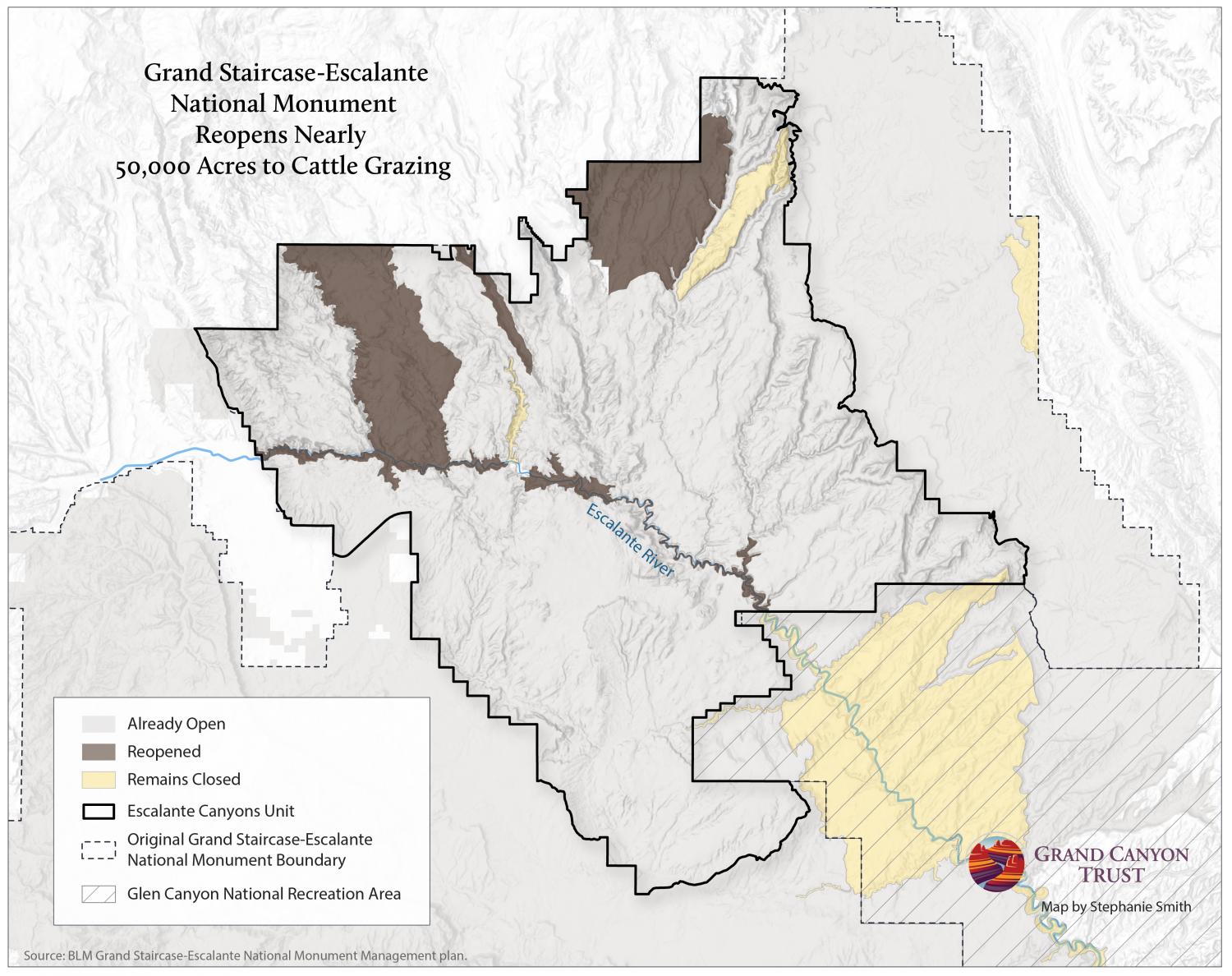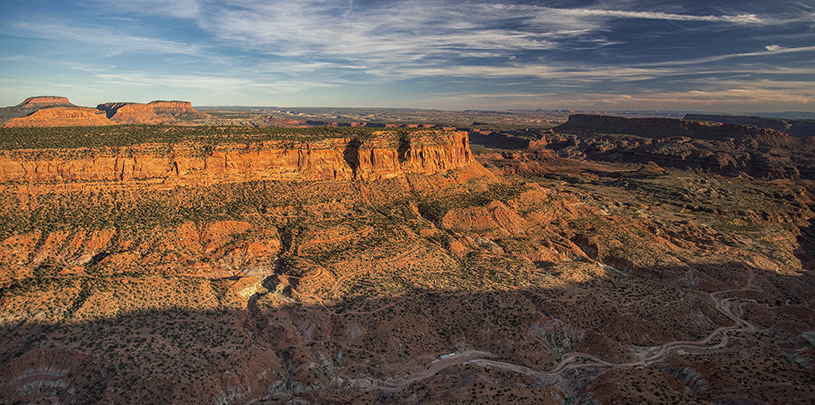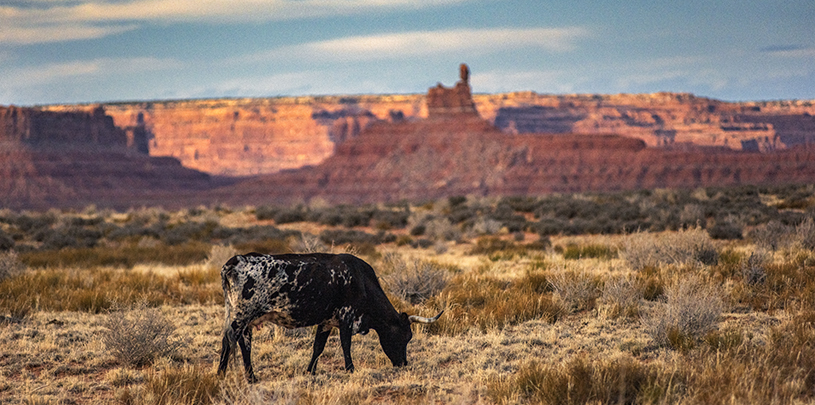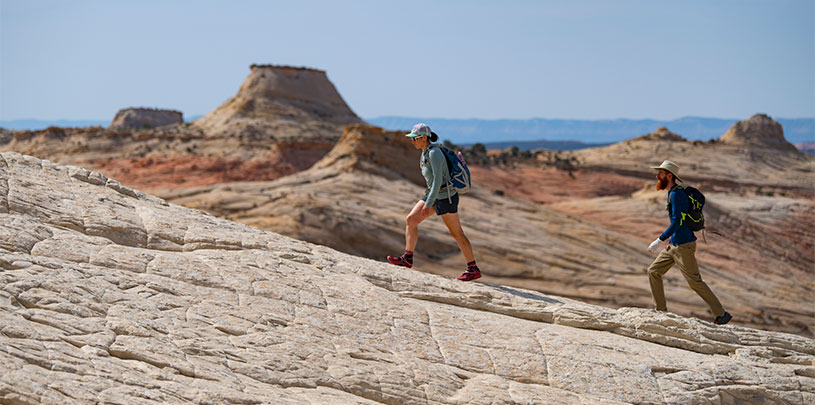
The slickrock canyons of the Escalante River are no place for Bessie. The roughhewn country in Grand Staircase-Escalante National Monument lures hikers into its folds but proves treacherous for livestock and ranchers caring for their herds.
Two decades ago, the Grand Canyon Trust helped negotiate a deal with willing ranchers to keep cows out of the spectacular sandstone labyrinth carved by the Escalante River and its tributaries. Cow-free for 20 years, the canyons have transformed into oases lush with native plants and wildlife.
Now the practical, hard-won, historic deal between ranchers and conservationists is on the line. The Bureau of Land Management (BLM) announced plans last month to put cows back in the red rock canyons of the Escalante River, threatening to unravel decades of recovery in this delicate landscape.
The 1999 retirement process
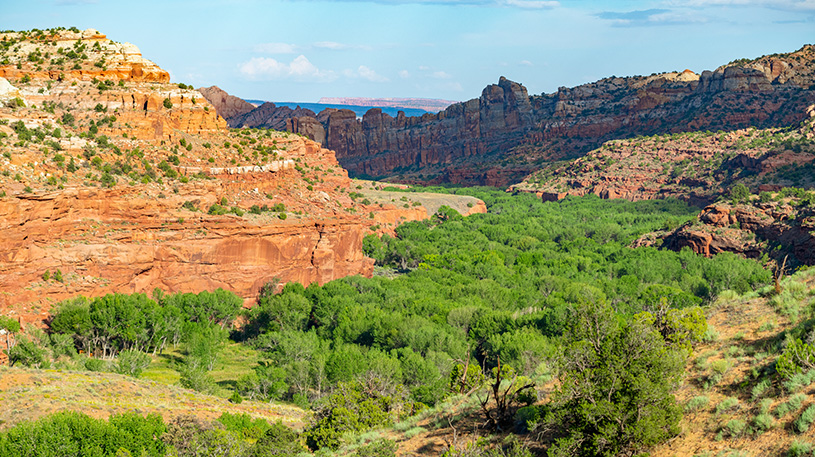
While the Escalante canyons are world-class for recreation, they are marginal to downright troublesome for ranching. A near-death experience prompted a rancher to approach the Trust in the late 1990s looking for a way to financial freedom, so we helped him and his neighbors negotiate voluntary buyouts of their permits to run cattle in the canyons. We agreed to compensate the ranchers for relinquishing their grazing privileges if the BLM chose to “retire” the canyons and remove livestock from the river corridor.
The BLM ultimately chose to do this after a public-planning process, concluding that the monument would profit with a healthier river, better wildlife habitat, recovered fisheries, and a wilder place to explore and find solitude. These natural values, not grazing, made the lands most valuable.
Ultimately the BLM closed some areas completely to grazing, established several “grass banks,” and limited grazing levels in other areas. The resulting deal enabled one rancher to buy a new ranch in Oregon, another to retire, and a third to reconfigure his operations, all the while protecting a fragile and treasured part of the monument. Wins all around.
Monument management plan unravels compromise
Last month, the Bureau of Land Management released its proposed management plan for the three remaining units and excised lands of Grand Staircase-Escalante National Monument, effectively gutting the pragmatic compromise we reached with ranchers and the BLM in 1999. The new monument management plan reopens nearly 50,000 acres to livestock grazing in the Escalante Canyons unit of the monument alone.
Brokering the original deal in 1999 required a great deal of persistence, trust, and commitment from everyone involved. It also required assurances, not only from local ranchers and the Trust, but also from the BLM, that the agency would back the hard-won and agreed-upon solution.
It is true that the BLM did not pledge to maintain the grazing closures for all time. Yet it is equally true that an expectation of durability in the BLM’s decision was essential to accomplishing this bargained-for success.
The facts haven’t changed — the river should stay closed to grazing
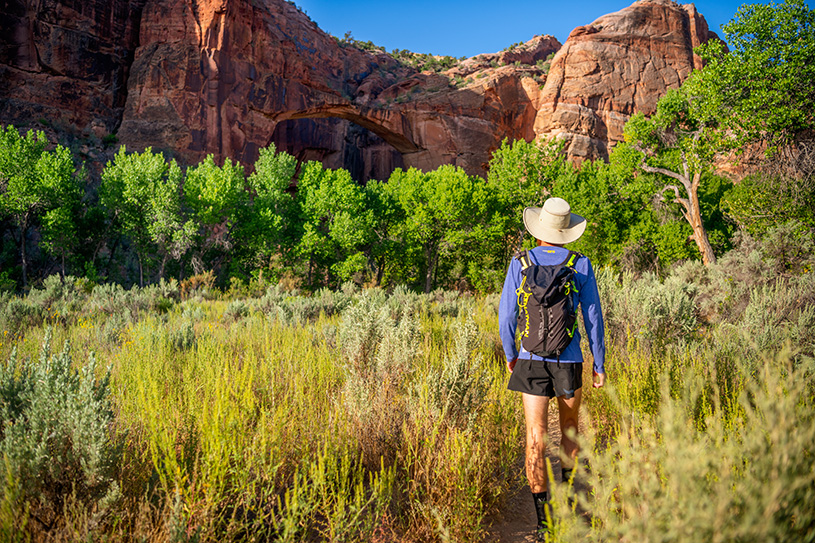
Nothing in the agency’s new management plan justifies the about-face. Indeed facts point the other way. Recreation along the Escalante River has only increased since 1999. Many folks say today, as they did 20 years ago, that cow pies, trampled vegetation, and soiled water diminish their experiences in the monument.
Climate change makes the riverway and surrounding arid lands even more vulnerable to drought and impacts from hooves and mouths of cattle. Economics too argue for keeping the river corridor closed to grazing. Putting cows back into the Escalante would undermine the massive effort and millions of dollars already sunk into removing invasive plants and restoring the health of the river. Why would the BLM contradict its own conclusions about the proper stewardship of these canyons and effectively undo 20 years of restoration?
The benefits of cooperative, market-based solutions to environmental problems of grazing along the Escalante are clear. Everyone shared this view across-the-aisle at the Department of the Interior two decades ago. And it is in that same, collaborative, mutually beneficial spirit, that the Trust urges the BLM to honor the Escalante River agreement and keep cattle out of these canyons.


